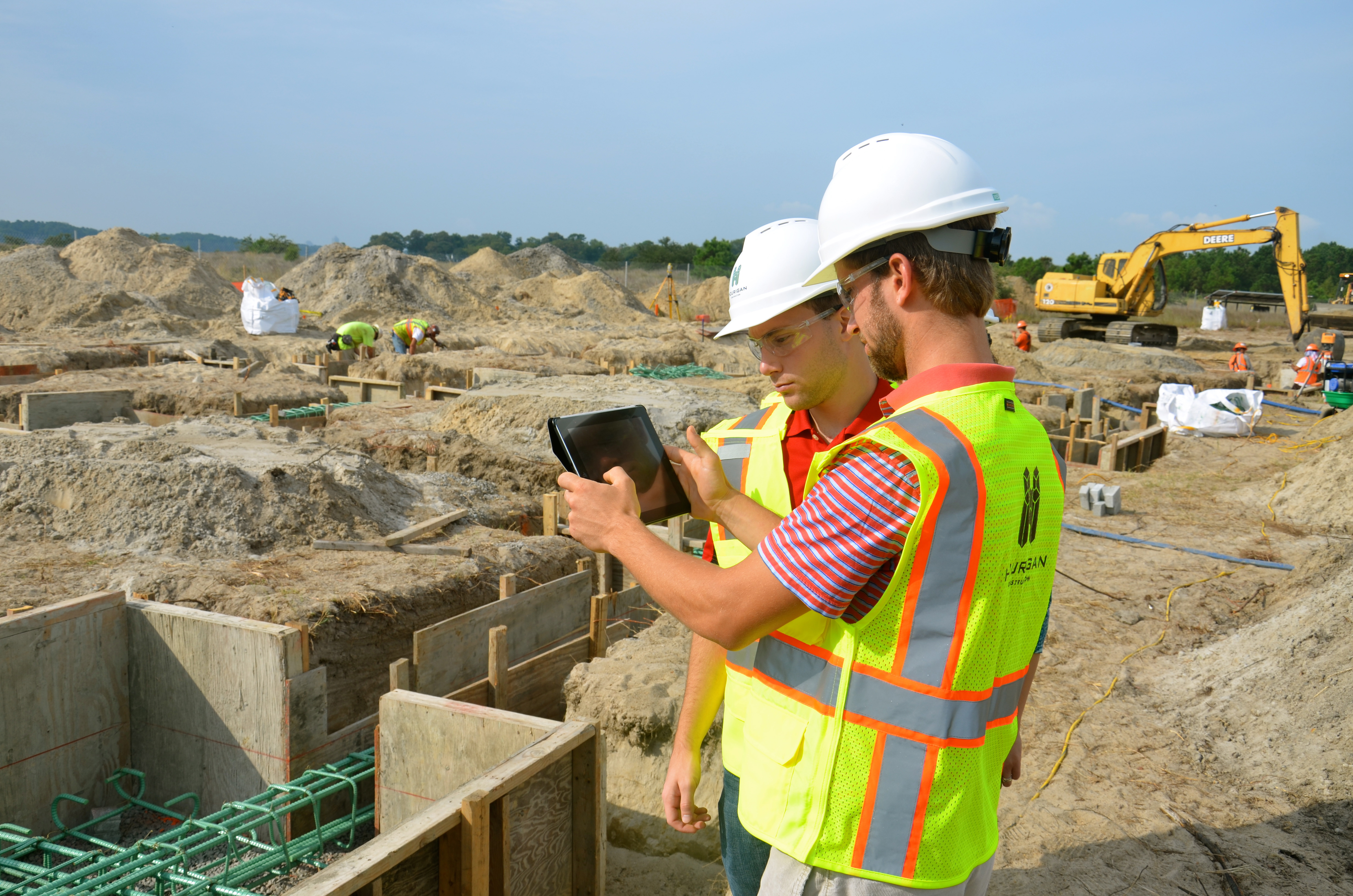Students gain real-world experience in virtual construction

A collaboration with Hourigan Construction is providing Virginia Tech students hands-on experience with virtual building construction.
Hourigan first collaborated with Virginia Tech's Myers-Lawson School of Construction in 2012, when students from the College of Architecture and Urban Studies’ Department of Building Construction were invited to work with the Chesapeake Bay Foundation on the Brock Environmental Center in Virginia Beach, Va.
This fall, a team of five undergraduate and graduate students will continue working with Hourigan on the project as they compare the utility of virtual construction management to traditional methods.
Assistant Professor Tanyel Bulbul, an expert on virtual building construction, and one of the faculty members in the Myers-Lawson School of Construction leading the student team, explained, “Virtual construction allows us to create virtual models of a project before the actual construction starts. This is important for proper planning and keeping the project on time and within budget. We use various modeling techniques such as virtual mock-ups, 4-D modeling, and construction simulation to better coordinate, estimate, and plan for all the construction activities.”
Throughout fall semester, the students will utilize methods of virtual construction to analyze various construction elements including clash detection, quality control and conformance, safety, and schedule adherence, discovering the various obstacles associated with virtual construction and solving problems encountered during the project’s construction phases in real-time.
The term “virtual” doesn’t make the project any less real, however. The students are working alongside Hourigan Construction — a relationship that first started when the company contacted Virginia Tech to be part of the planning and implementation process for the Chesapeake Bay Foundation’s Brock Environmental Center.
The Brock Environmental Center is a flagship building for the Chesapeake Bay Foundation. It is situated on the Lynnhaven Inlet in the southern section of the Chesapeake Bay, an important estuary and critical component to the health of the bay; therefore, the most stringent green rating system available — the Living Building Challenge — was selected for the project.
Chris Brandt, executive vice president at Hourigan Construction, and Andrew McCoy, an associate professor in the Department of Building Construction in the Myers-Lawson School of Construction, worked closely with the students to research and recommend solutions for the state-of-the-art construction processes needed to construct the center to meet the extremely rigid and sustainable Living Building Challenge requirements.
Student recommendations for the Brock Environmental Center included a mobile photovoltaic array, electric platform lift, and small electric mobile tower crane, all of which will be incorporated into the actual site plan.
“The students did a great job of applying critical and innovative thinking to the overall project means, methods and site utilization plan,” Brandt said. “We are now looking forward to Virginia Tech’s continued participation in ‘real-time’ construction management, BIM coordination and issue resolution.”
Building on the success of that initial project, College of Architecture and Urban Studies students Jeff Bonica of Canton, Mass., a senior majoring in building construction; Iman Elrayah of Annandale, Va., Parisa Nikkhoo of Tehran, Iran, a Ph.D candidate in environmental design and planning; Ryan Piplico of Williamsburg, Va., a senior majoring in building construction; and Zach Wegryn of Knoxville, Tenn., a senior majoring in building construction, will spend fall semester working with the virtual construction management process for the Brock Environmental Center.
“This course is unique because it gives the students an opportunity to use virtual construction at its full potential to work on a real world project. Many of the exercises that we do in classes are completed in a controlled environment where students work with their own peers,” said Bulbul. “The collaboration with Hourigan gives them the opportunity to work with professionals in real time. Specifically from the virtual construction perspective, they see how all the building information modeling tools are used in the industry.”
Jeff Bonica, who was also part of the original 2012 student team said, “It has been an invaluable experience that has complemented our classroom learning well and allowed us to see the real-life applications of our knowledge. It is so rare to find a company so willing to involve students on actual projects that I speak for the team when saying we're eager to get to work.”
Working in real time on a project under construction by a major company allows students to explore how the information technology they learn in the classroom, such as BIM 360 Field, can be used to its full potential on a complex building projects with challenging standards.
“It is a rare and valuable opportunity for students to plan and implement a Living Building Challenge project and work with an owner such as the Chesapeake Bay Foundation and a constructor such as Hourigan, who are committed to excellence in sustainability of buildings and their environment. In fact, this will be the first building to successfully integrate the Living Building Challenge on the East Coast of North America,” said McCoy. “Collaborations such as this continue to reinforce Virginia Tech’s understanding of the latest technology in the industry and its ability to diffuse that information to the next leaders of our industry. The students not only are crafting their own knowledge, interacting with thought leaders in our industry and beyond, but they are influencing the work of tomorrow.”







